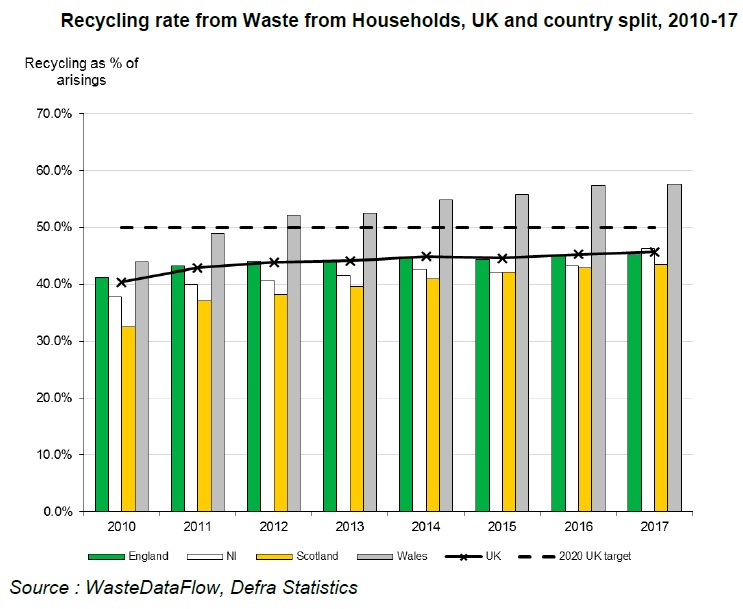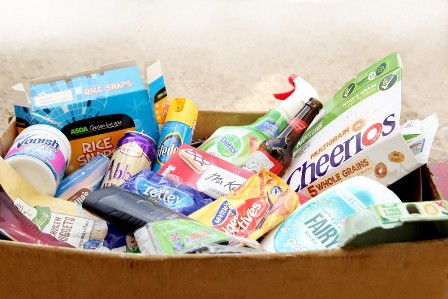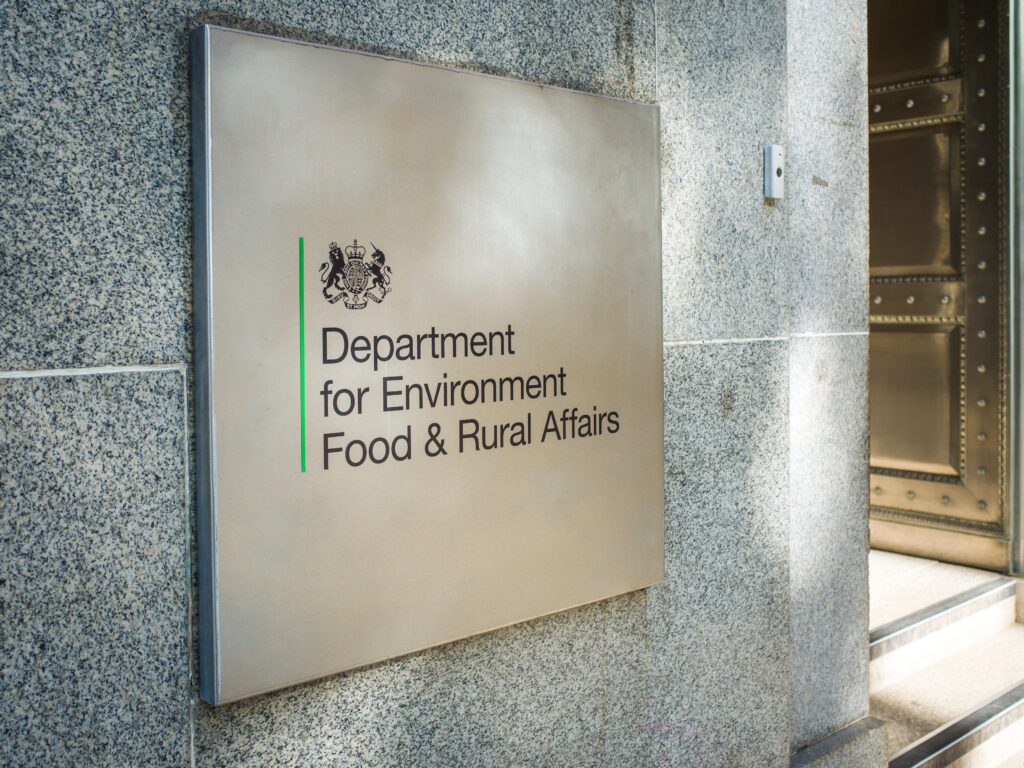This represents a fractional increase on the 45.2% recycling rate recorded for 2016 – but confirms that the UK still remains some way short of the 50% by 2020 EU target for household waste.

The figures – which cover the UK as a whole – follow on from the publication of data from England and the devolved authorities last year (see letsrecycle.com story). This is the data reported to the EU to record progress towards statutory targets.
In total, around 26.8 million tonnes of household waste material was captured, the data suggests, with around 12.2 million tonnes counted as recycled. Around 0.7% of the total is comprised of metal from incinerator bottom ash (IBA) – which has only been included in the final data since 2015.
According to the figures, the recycling rate increased in all UK countries in 2017. For England – which produces the bulk of the material included in the data – this stood at 45.2%, compared with 46.3% in Northern Ireland, 43.5% in Scotland and 57.6% in Wales.
Northern Ireland saw a 3.0 percentage point increase in the recycling rate in 2017 compared to 2016, the data suggests, which has been attributed by Defra to the introduction of mandatory food waste collection from April 2017.
The figures indicate that there was a slight decrease in the percentage of biodegradable waste sent to landfill between 2016 and 2017 – falling from 7.8 million tonnes to around 7.4 million tonnes. England was responsible for over three quarters (77%) of this material, generating 5.7 million tonnes of the 7.4 million tonne UK total.
Packaging
Provisional figures also indicate that 70.2% of UK packaging waste was either recycled or recovered compared to 71.4% in 2016. This exceeds the EU target to recycle or recover at least 60% of packaging waste.

Recycling accounted for 7.4 million tonnes of the 11.5 million tonnes of packaging waste arisings in 2017, with a further 0.7 million tonnes recovered by use in ‘energy from waste’ incineration. Paper and cardboard had the highest waste arisings, at 4.7 million tonnes, the report notes.
The highest recycling rate achieved in 2017 was 79.0% for paper and cardboard, followed by 71.3% for metal and 67.6% for glass. Tonnes of paper and cardboard packaging recovered or recycled fell by 3.5% from 3.9 million tonnes in 2016 to 3.8 million tonnes in 2017. However, for other materials, the amount recycled or recovered has increased slightly over the same period, the report suggests.
Commercial & Industrial waste
On the commercial and industrial side, the figures suggest that a total of 37.9 million tonnes of C&I waste was generated in 2017 in England – although full estimates for the amount of waste generated across the whole of the UK are not available.
The figures for C&I waste are the first published since a revision to the methodology used to calculate the generation of the material – based on known tonnages of waste processed at permitted sites and recycling facilities.
According to Defra, the methodology includes enhanced data capture at incineration and from RDF exports – making it difficult to compare the 2017 figures to previous years.
Related Links
Defra – UK Statistics on Waste











What is clear that the stark and impressive improvements since 2000 have stalled, without IBA the figures look quite different in the last two years. There will also be slight differences each year due to the impacts of the economy and the weather. 2018 could prove to be a challenging year with both the cold spell in March (Snow !!) and the very hot, long and dry summer both impacting on garden waste.
However, on the real positive side we now have renewed focus and vigour with the
Resources and Waste Strategy and we should once again see demonstrable increases to recycling rates withing the next decade, as we collectively take the next step..